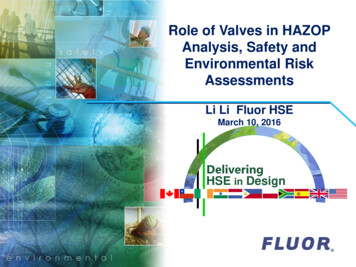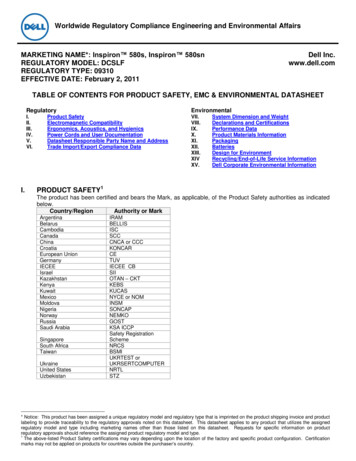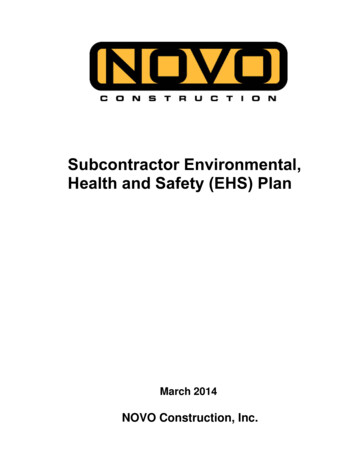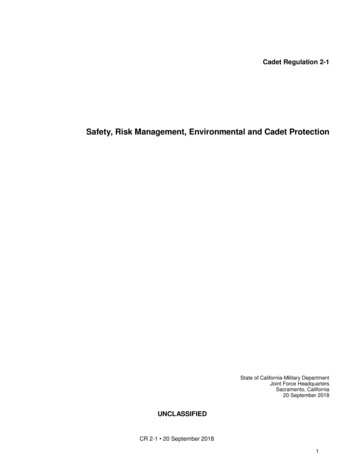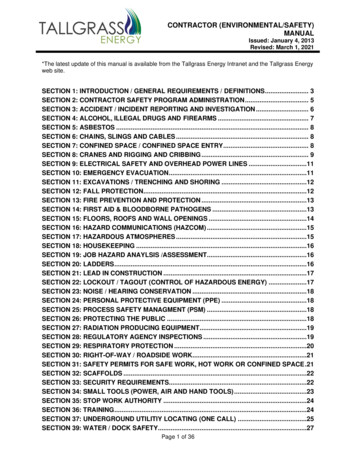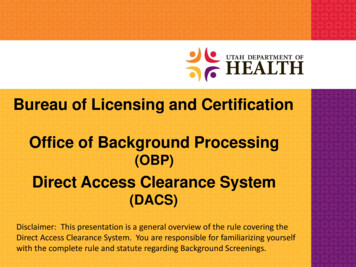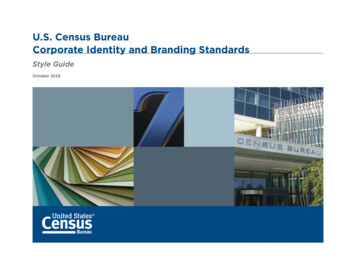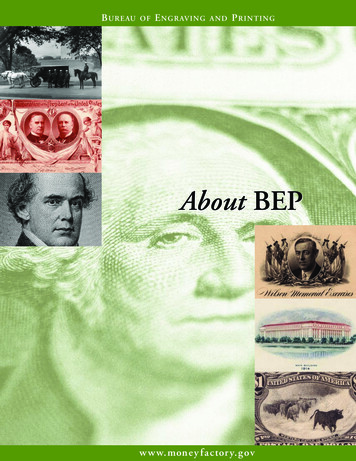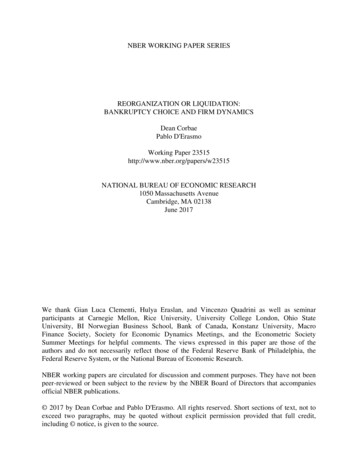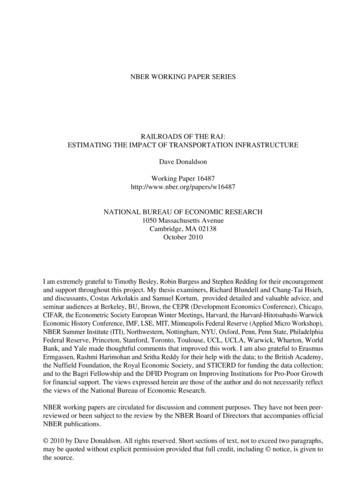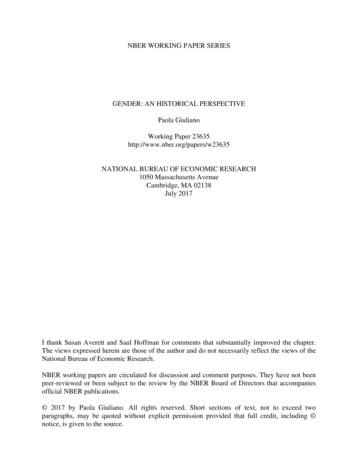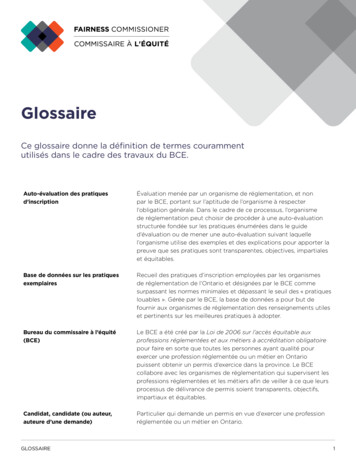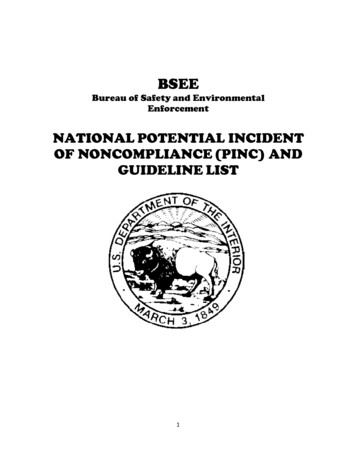
Transcription
BSEEBureau of Safety and EnvironmentalEnforcementNATIONAL POTENTIAL INCIDENTOF NONCOMPLIANCE (PINC) ANDGUIDELINE LIST1
PREFACELAST UPDATE May 2014The Offshore Safety Improvement Branch (OSIB) of the Office of Offshore RegulatoryPrograms (OORP) wish to extend our appreciation to all participating BSEE personnel andespecially the District representatives for their dedicated effort and expertise in providing BSEEInspection Program with this edition of the National PINC and Guideline List.Revisions to Guidelines for the National PINC ListThe following format is presented as a means for BSEE personnel to suggest revisions to theGuidelines to the National PINC List. All suggested revisions will be reviewed by the PINC ListRevision Work Group. Before revisions are included in the National PINC List they will be routedto the Regional Supervisors/Field Operations, or their staff, for review and comment. Please submitsuggested revisions by email to pincteam@bsee.gov or by mail to:Bureau of Safety and Environmental EnforcementPINC List Revision Work GroupSafety and Enforcement BranchMail Stop – HE3314381 Elden StreetHerndon, Virginia 20170Suggested Revision Format:PINC Number:Enforcement Action:Definition:Inspection Procedure:If Noncompliance Exists:Inspection Form:Rationale:Please be advised:The guidelines in this document are to be considered the most preferable way of implementing theinspection and enforcement of each PINC and not intended as a directive or to supersede theregulatory language of Title 30 of the Code of Federal Regulations.Also, the enforcement status of a Facility Shut-in (S) INC or a Component Shut-in (C) INC may notnecessarily require the full extent of the enforcement specified. The Inspector has full authority touse their discretion when issuing a Component Shut-in (C) INC. However, when issuing a FacilityShut-in INC the Inspector must solicit approval from the District Manager or SupervisoryInspector prior to the actual shut-in of a facility. The only exception to this requirement is whenthere is an imminent danger to personnel, property, or the environment, exacting a more immediateBSEE response.
DESCRIPTION OF THE GUIDELINES TO THE NATIONAL PINC LISTThe Guidelines to the National PINC List establish the procedures for the inspection of lessee operationsand facilities by BSEE personnel. The use of these guidelines for all inspections will result in aninspection program that is both fair and consistent in all OCS waters. The information provided in theGuidelines to the National PINC List is shown in the following outline of the format:PINC NUMBER: A unique identifier for the specific requirement.PINC STATEMENT: The clear and concise description of the requirement.AUTHORITY: The regulatory authority as found in the Code of Federal Regulations.ENFORCEMENT ACTION: This is the enforcement action(s) that must be taken by BSEE for anidentified violation(s) of the regulations. Enforcement action(s) may result in a complete facility shut-in(S), a component shut-in (C), or a warning (W). A substantial number of the Potential Incidents ofNoncompliance (PINCs) provide enforcement actions in all three enforcement categories [W/C; W/C/S].Multiple enforcement action(s) [W/C; W/C/S] may be issued to document severity of identifiedviolations. When multiple enforcement actions [W/C or W/C/S] are provided in the PINC, the criteria foreach level of enforcement action are provided in the “IF NONCOMPLIANCE EXISTS” section of thePINC.RATIONALE/NOTE: Additional information describing the basis or providing background informationpertinent to the requirement stated in the “PINC Statement” block.DEFINITION: Definitions of terms used in the PINC.INSPECTION PROCEDURE: Preferred detailed guidelines to be used by BSEE personnel to ensurethat the stated requirement is met. However, the guidelines in this document are to be considered thepreferable method of implementing the enforcement of each PINC and not intended as a directiveor to supersede the regulatory language in the Code of Federal Regulations.INSPECTION COUNT: Describes the number of items checked to be entered on the inspection form.An incident of noncompliance (INC) must be issued to document any negative (no) answer to a PINCstatement.Examples:1. Enter one item checked per facility inspected.One (1) is entered in the “# CK” column on the inspection form and answered one [1] in the “#Y”or “#N”.2. Enter one item checked for each safety device inspected.A total count of the number of safety devices, components, wells, etc., is entered in the “#CK”column on the inspection form. The total entries in the “#Y”, “#N”, and “#N/A” columns mustcorrespond to the total count in the “#CK” column.
IF NONCOMPLIANCE EXISTS: Describes the specific enforcement action to be taken for eachidentified violation and the severity level of each violation of the regulations. Examples:1. Issue a warning (W) incident of noncompliance when the situation poses no immediatedanger to personnel or equipment.2. Issue a component (C) incident of noncompliance for a specific piece of equipment or locationwhen it is determined to be part of an unsafe situation or it poses an immediate danger topersonnel or other equipment and it can be shut-in without affecting the overall safety of thefacility.3. Issue a structure (S) incident of noncompliance when the unsafe situation poses an immediatedanger to the entire facility or personnel and the specific piece of equipment or location cannotbe shut-in without affecting the overall safety of the facility.INCIDENT(S) OF NONCOMPLIANCE TO BE ISSUED/ INC COUNT: Dictates the specificnumber of incident(s) of noncompliance to be issued for identified violation(s) of the regulations.Examples:1. Issue one incident of noncompliance for each facility inspected.One (1) incident of noncompliance is issued on each facility inspected with detailed bulletdescriptions of the identified violations. Exception to the one incident of noncompliance perfacility inspected rule is when multiple enforcement actions [W/C or W/C/S] are provided in thePINC. PINCs with multiple enforcement action(s) [W/C; W/C/S] may dictate that multipleincidents of noncompliance are issued per facility to document severity levels of violations. Suchcases will result in the issuance of one incident of noncompliance for the appropriate selectedenforcement action with detailed bullet descriptions of the identified violations.2. Issue one incident of noncompliance for each safety device inspected.One (1) incident of noncompliance is issued for each safety device, component, well, etc., that isdetermined to be in violation of the regulations.Should an immediate shut-in increase the risk to safety or pollution, a statement on the INC shallindicate when the shut-in is to take effect. In an after-the-fact situation where no correction ispossible, a warning (W) INC will normally be issued, since a shut-in would serve no useful purpose.However, an after-the-fact INC that may result in Civil Penalty Review (CPR) recommendationshould be issued with the appropriate shut-in enforcement action. Should an immediate shut-inincrease the risk to safety or pollution, a statement on the INC shall indicate when the shut-in is totake effect. In an after-the-fact situation where no correction is possible, a warning (W) INC isissued, since a shut-in would serve no useful purpose.
ACRONYMS USEDEnforcement ActionsW WarningC Component Shut-inS Facility (Platform/Rig) Shut-inDocuments ReferencedASME BPVCASME Boiler and Pressure Vessel CodeANSI/ASME SPPE-1Quality Assurance and Certification of Safety and PollutionPrevention Equipment Used in Oil and Gas OperationsANSI Z88.2Practices for Respiratory ProtectionAPI RP 2DAPI Recommended Practice for Operation and Maintenance of OffshoreCranesAPI RP 13BAPI Recommended Practice Standard Procedure for Field Testing DrillingFluidsAPI RP 14BAPI Recommended Practice for Design, Installation, Repair and Operationof Subsurface Safety Valve SystemsAPI RP 14CAPI Recommended Practice for Analysis, Design, Installation and Testingof Basic Surface Safety Systems for Offshore Production PlatformsAPI RP 14FAPI Recommended Practice for Design and Installation of ElectricalSystems for Offshore Production PlatformsAPI RP 14GAPI Recommended Practice for Fire Prevention and Control on OpenType Offshore Production PlatformsAPI RP 500API Recommended Practice for Classification of Locations for ElectricalInstallations at Petroleum Facilities Classified as Class I, Division 1 andDivision 2API RP 505API Recommended Practice for Classification of Locations for ElectricalInstallations at Petroleum Facilities Classified as Class I, Zone 0, Zone 1,and Zone 2
Documents Referenced (cont.)API RP T2API Recommended Practice for Qualification Programs for OffshoreProduction Personnel Who Work with Anti-pollution Safety DevicesASME B30.4cPortal, Tower, and Pedestal CranesOther EccsCFRDOCDEORESDFSLFSVgpmhpH2 n National Standards InstituteApplication for Permit to DrillAmerican Petroleum InstituteApplication for Permit to ModifyAmerican Society of Mechanical EngineersAutomatic Temperature CompensatorAutomatic Temperature Gravity1 x 106 dynes per square centimeterBarrelBlowdown ValveBlowout PreventerBurner Flame Detector (burner safety low)Bureau of Safety and Environmental EnforcementCubic centimeters per secondCode of Federal RegulationsDevelopment Operations Coordination DocumentEnd of Operations ReportEmergency ShutdownLow Flow Sensor (flow safety low)Flow Safety Valve (check valve)Gallons per minuteHorsepowerHydrogen SulfideIdentificationIncident of NoncompliancePotential Incident of NoncomplianceLower Explosive LimitLevel Safety High (high level sensor)Level Safety Low (low level sensor)Maximum Allowable Operating PressureMaximum Anticipated Surface PressureMobile Offshore Drilling UnitManual of Petroleum StandardsMeasurement-while-drillingOuter Continental ShelfOutside diameter
Other Acronyms UVWOCWPDegrees FahrenheitPounds per cubic footPersonal Flotation DeviceMeasure of acidity and alkalinity (potential of hydrogen)Plan of ExplorationPounds per gallonParts per millionPressure Safety High (high pressure sensor)Pounds per square inchPounds per square inch gaugePressure Safety Low (low pressure sensor)Pressure Safety Valve (pressure relief valve)Power Take offSafety Analysis ChecklistSafety Analysis Function EvaluationSupervisory Control and Data AcquisitionSurface Controlled Subsurface Safety ValveShutdown ValveShut-in Tubing PressureSulfur DioxideSubsurface Controlled Subsurface Safety ValveSubsurface Safety ValveSurface Safety ValveTemperature Safety Element (fusible material)Temperature Safety High (high temperature sensor)Temperature Safety Low (low temperature sensor)True Vertical DepthUnderwater Safety ValveUltravioletWaiting On CementWorking Pressure
TABLE OF CONTENTSLAST UPDATE October 2010General GuidelinesIdentity . G-100 thru G-101Operations . G-110 thru G-116Records . G-117Accident Reporting . G-131 thru G-132Engines . G-150 thru G-156Marking of Equipment . G-250 thru G-253Welding and Burning . G-300 thru G-306Welding and Burning Operations Outside Approved Areas . G-309 thru G-317Pollution GuidelinesPrevention . E-100 thru E-108Inspections and Reports . E-120 thru E-123Artificial Islands . E-200 thru E-202Drilling Operations GuidelinesTraveling Block . D-100 thru D-101Directional Survey . D-110 thru D-113Moving Drilling Rigs . D-120 thru D-121ESD System . D-130Casing Program . D-150 thru D-179BOP Systems and Components . D-200 thru D-227Surface BOP System . D-231 thru D-232Subsea BOP Systems . D-240 thru D-249BOP Tests, Actuators, Inspections, and Maintenance . D-250 thru D-269Surface BOP Tests . D-270 thru D-274Subsea BOP Tests . D-281 thru D-285Well-Control Drills . D-290 thru D-292Diverter Systems . D-300 thru D-314Surface Diverter Systems .
API RP 500 API Recommended Practice for Classification of Locations for Electrical Installations at Petroleum Facilities Classified as Class I, Division 1 and Division 2 . API RP 505 API Recommended Practice for Classification of Locations for Electrical Installations at PetroleumFacilities Classi ed as Class I, Zone 0, Zone 1, fi and Zone 2 . Documents Referenced (cont.) API RP T2 API .
